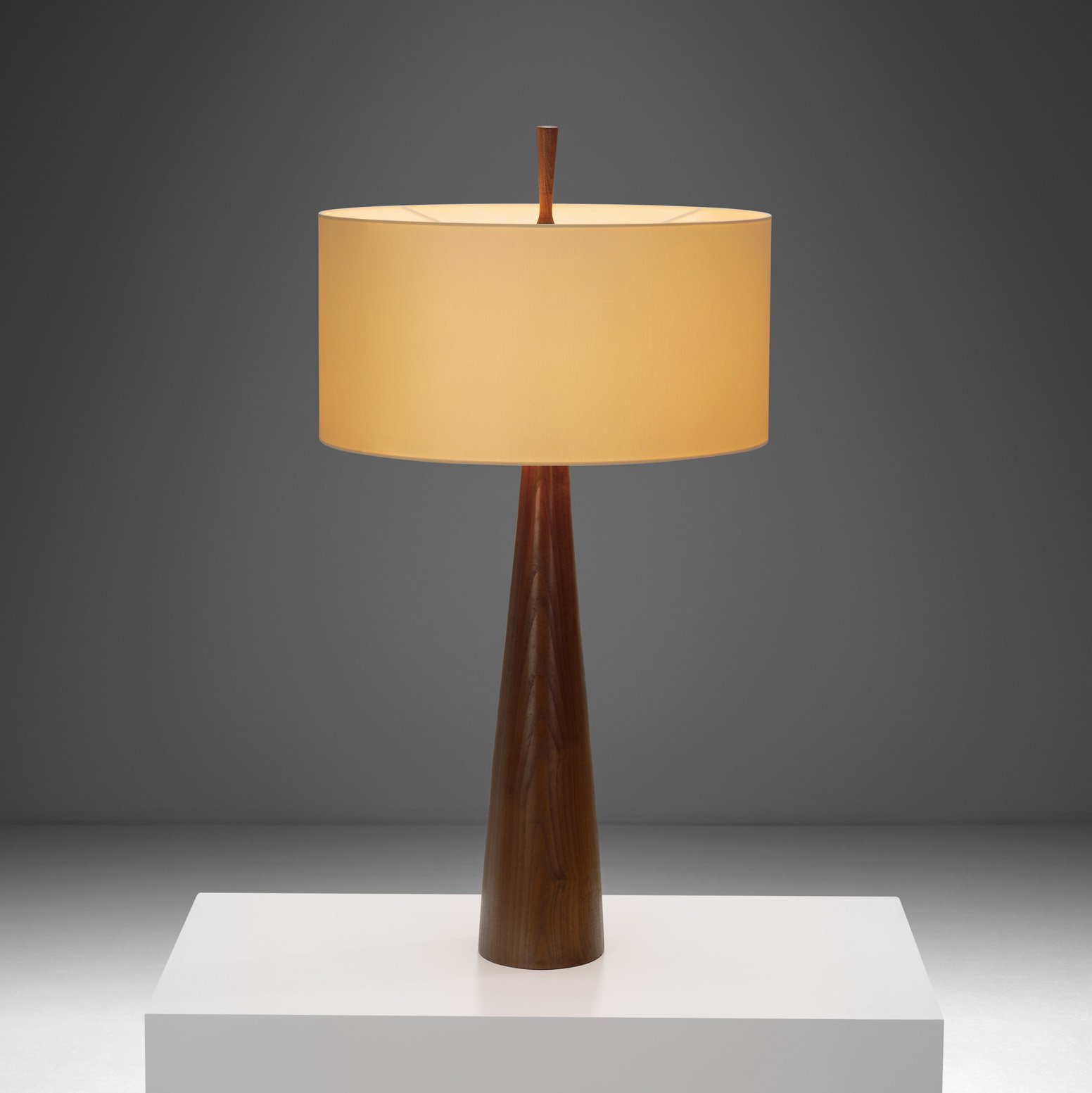Alvar Aalto Model “A704” Table Lamp for Valaistustyö Ky, Finland 1950s





















Alvar Aalto Model “A704” Table Lamp for Valaistustyö Ky, Finland 1950s
REQUEST PRICE HERE
Price category: 15,000 - 20,000 usd / eur
Finland and Helsinki were extremely important in the Mid-Century Modern design history, and one of its most famous designers was Alvar Aalto. In contrast with the functionalism of the International, Aalto brought a refreshing breath of humanism to modern design.
There is a saying that “Functionalism is a Finnish thing”, and it is hard to argue with that when looking at this table lamp. Functionality is without a doubt one of the most important aspects of Finnish design, however, there is also a demand for the highest quality, both in design and materials. Alvar Aalto is the Finnish icon of functionalism, and through this “A704” model it is easy to see why. The design is first and foremost functional, combining practicality and aesthetics. The body consists of a metal frame that is uniquely covered in black leather, and a painted metal shade. The shape resembles a figure leaning forward, which is reinforced by the “two-toed” base and the sizeable shade, which is perforated towards the neck. The shade has two additional white layers that are especially appealing when the lamp is turned on. When lit, the textural interest of the lamp’s structure becomes even more apparent. In the inside of the shade, the manufacturer’s mark can be found with the model’s name.
In contrast with the functionalism of the international scene, Alvar Aalto brought a refreshing breath of humanism to modern design. Aalto's free-form designs, in harmony with human needs and nature, anticipated the organic modernism of the 1950s and 1960s. This model can be a design statement in any space while also serving its functional purpose.
Condition:
In good vintage condition. Wear consistent with age and use. Some minor scratches and marks on the metal and leather. The lamp has its original leather cover.
Dimensions:
13.58 in W x 15.74 in D x 14.96 in H
34.5 cm W x 40 cm D x 38 cm H
Literature:
Eva B Ottillinger, Alvar Aalto, Furniture: The Kossdorff Collection, Vienna, 2002, p. 53, fig. 50.
Thomas Kellein, ed. Alvar & Aino Aalto, Design Collection Bischofberger, exh. cat., Kunsthalle Bielefeld, Zurich, 2005, page 190.
Charlotte and Peter Fiell, eds., 1000 Lights, Vol. 1: 1879 to 1959, Cologne, 2005, p. 492.
About the Designer:
Hugo Alvar Henrik Aalto, (1898, Kuortane, Fin., Russian Empire - 1976, Helsinki, Fin.) was a Finnish architect, city planner, and furniture designer. Aalto achieved an international reputation as a furniture designer and architect. Through his more than 200 buildings and projects, ranging from factories to churches, (a number of them built outside Finland), Aalto remains the most renowned Finnish architect and designer.
Alvar Aalto’s architectural studies at the Technical Institute of Helsinki were disrupted by the Finnish War of Independence, in which he also participated. Ultimately, he graduated in 1921 and began working in Jyväskylä, in central Finland. In 1927 Aalto moved his studio to Turku, and in 1933 to Helsinki, where he collaborated with his wife, Aino Marsio until 1949.
The first experiments with furniture date from the early 1930s, when he took charge of the interior of the Paimio Sanatorium. At the time, Aalto’s furniture was known for its use of laminated wood and original, structural forms. In 1935 the Artek Company was established by Aalto and Maire Gullichsen, the wife of the industrialist and art collector Harry Gullichsen, to manufacture and market his furniture. His distinctive style is a blend of modernist refinement and indigenous materials, which eventually earned him world-wide recognition.
Throughout his long career, Alvar Aalto received several prizes and honours. He was a member of the Academy of Finland (Suomen Aketemia) and was its president from 1963 to 1968 as well as a member of the Congrès Internationaux d’Architecture Moderne from 1928 to 1956. In 1957 he received the Royal Gold Medal for Architecture from the Royal Institute of British Architects and the Gold Medal from the American Institute of Architects (1963).
Today, the Alvar Aalto Museum keeps the legacy of the designer alive. It was designed by Aalto himself, and is located in the Finnish town of Jyväskylä. ~H.












